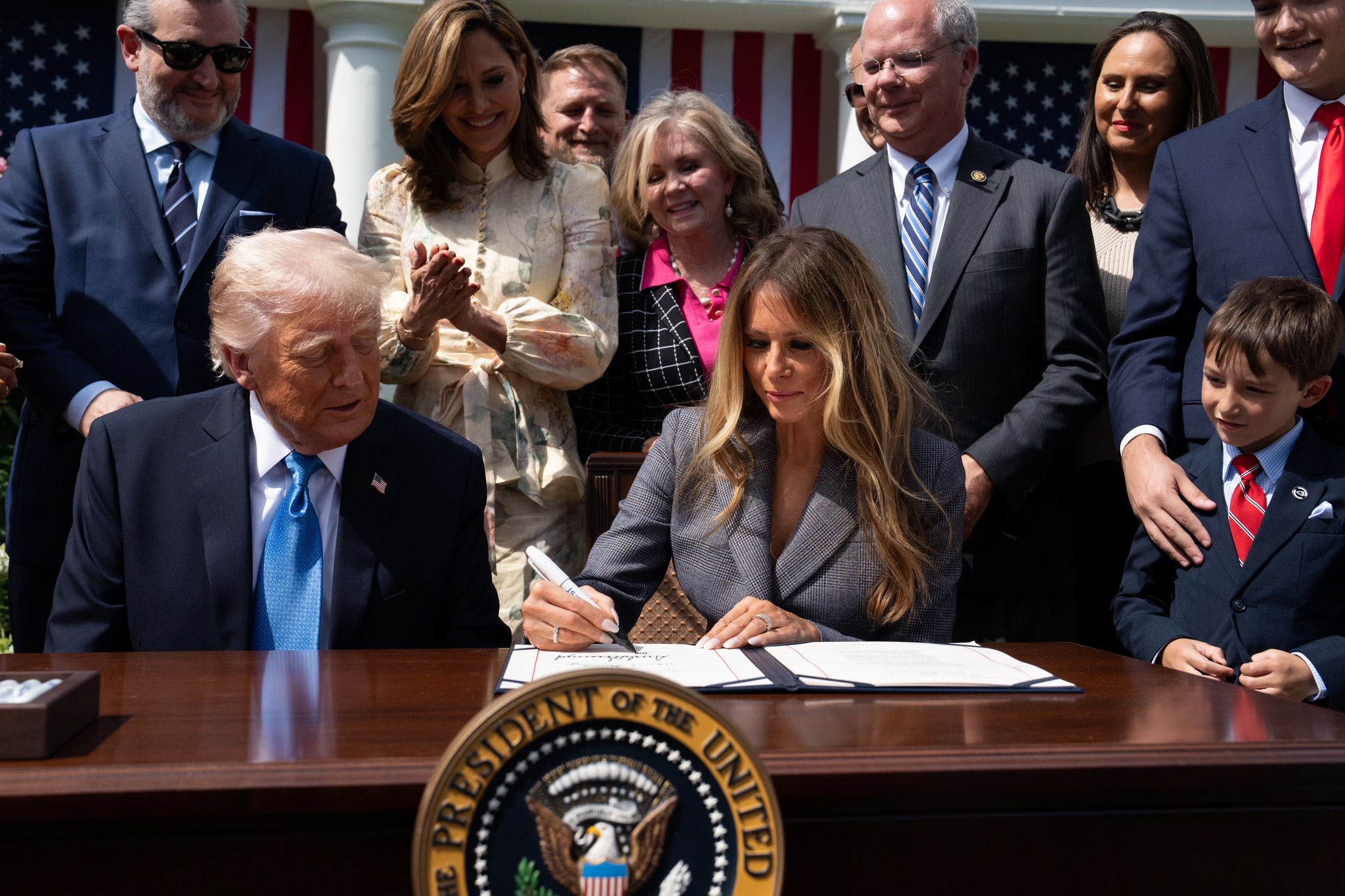WASHINGTON, May 19, 2025 — President Donald Trump and First Lady Melania Trump appeared together in the White House Rose Garden on Monday for the signing of the “Take It Down Act”, a bipartisan bill aimed at curbing the nonconsensual sharing of sexually explicit images and videos, including those generated by artificial intelligence deepfakes.
The new legislation makes it a federal crime to knowingly distribute sexually explicit content without a person’s consent, and grants victims the right to demand swift removal from websites and platforms. It also holds tech companies more accountable by requiring them to establish expedited takedown processes.
A “National Victory,” Says First Lady
Melania Trump, who has long championed child safety online, called the act a “national victory that will help parents and families protect children from online exploitation.” She praised the bipartisan effort and thanked her husband “for standing with us on this effort,” also urging the Federal Trade Commission (FTC) and the private sector to enforce the new rules and expand protections.
“Today, we are sending a clear message: our children, our families, and our privacy are not for sale or exploitation online,” she said.
Positive Aspects of the Law
Supporters of the Take It Down Act say it fills urgent legal gaps, especially with the growing threat of AI-generated deepfakes. Key provisions include:
- Criminal penalties for distributing explicit content without consent
- Mandated takedown systems for platforms, with fast response times
- Victim protections, including legal avenues for civil action and anonymity
- Specific focus on AI-generated content, a rapidly evolving area of abuse
Civil rights groups and victim advocacy organizations have welcomed the act as a step forward in addressing the growing tide of digital sexual abuse, particularly among teenagers and young women. Deepfake technology has increasingly been used to fabricate explicit content featuring public figures and private individuals without their knowledge or consent.
Concerns from Critics
However, some civil liberties organizations and digital rights advocates have raised red flags. Their objections largely focus on free speech, privacy, and enforcement risks:
- Overreach and censorship: Groups like the Electronic Frontier Foundation (EFF) argue that the law could lead to over-moderation by platforms, who might take down legitimate content or satire out of caution, potentially infringing on free speech.
- Vagueness in AI definitions: Critics say the bill’s language around what constitutes “AI-generated content” is still too broad or ambiguous, leaving room for legal uncertainty.
- Burden on smaller platforms: Smaller tech companies and startups warn that compliance costs and the need to build takedown systems could disproportionately affect their operations.
There is also debate around how the law will be enforced across platforms hosted outside the U.S., and how swiftly government agencies can respond to rapidly spreading content.
Looking Ahead
Despite the concerns, the Take It Down Act represents one of the most sweeping efforts to date by the federal government to regulate the intersection of privacy, technology, and online abuse.
With the president’s signature, the law will take effect in 90 days. Regulatory agencies, led by the FTC, are expected to issue guidelines in the coming weeks.
For now, the law sends a strong message that the United States is taking online exploitation seriously — even as it sparks necessary debates about the limits of regulation in the digital age.
President Trump and wife Melania Picture by the US White House Media Team


